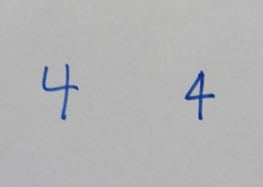|
2004 Kroger St. Jude International And The Cellular South Cup
The 2004 Kroger St. Jude International and the Cellular South Cup were tennis tournaments played on indoor hard courts at the Racquet Club of Memphis in Memphis, Tennessee in the United States that were part of the International Series Gold of the 2004 ATP Tour and of Tier III of the 2004 WTA Tour The 2004 WTA Tour was the elite professional tennis circuit organized by the Women's Tennis Association (WTA) for the 2004 season. The 2004 WTA Tour calendar comprised the Grand Slam tournaments (supervised by the International Tennis Federatio .... The tournaments ran from February 15 through February 22, 2004. Finals Men's singles Joachim Johansson defeated Nicolas Kiefer 7–6(7–5), 6–3 * It was Johansson's only title of the year and the 1st of his career. Women's singles Vera Zvonareva defeated Lisa Raymond 4–6, 6–4, 7–5 * It was Zvonareva's 1st title of the year and the 2nd of her career. Men's doubles Bob Bryan / Mike Bryan defeated Jeff Coetz ... [...More Info...] [...Related Items...] OR: [Wikipedia] [Google] [Baidu] |
Hard Court
A hardcourt (or hard court) is a surface or floor on which a sport is played, most usually in reference to tennis courts. It is typically made of rigid materials such as asphalt or concrete, and covered with acrylic resins to seal the surface and mark the playing lines, while providing some cushioning. Historically, hardwood surfaces were also in use in indoor settings, similar to an indoor basketball court, but these surfaces are rare now. Tennis Tennis hard courts are made of synthetic/acrylic layers on top of a concrete or asphalt foundation and can vary in color. These courts tend to play medium-fast to fast because there is little energy absorption by the court, as with grass courts but unlike clay courts. The ball tends to bounce high and players are able to apply many types of spin during play. Flat balls are favored on hard courts because of the extremely quick play style. Speed of rebound after tennis balls bounce on hard courts is determined by how much sand is in the sy ... [...More Info...] [...Related Items...] OR: [Wikipedia] [Google] [Baidu] |
ATP International Series Gold
International Series Gold (previously known as the Championship Series) was a series of professional tennis tournaments held internationally between 2000 and 2008 that were part of the Association of Tennis Professionals, ATP Tour. The tournaments were positioned below the ATP Masters Series, and above the ATP International Series in terms of prize money and ranking points available. International Series Gold tournaments offered players cash prizes (purses from $755,000 to $1,426,250 as of 2008) and the ability to earn ATP ranking points. See Association of Tennis Professionals#Rankings for more details. Effective in 2009, this series of tournaments became the ATP Tour 500, incorporating many of the same tournaments. The "500" represents the number of ATP ranking points earned by the winner of each event in the series. Tournaments The locations and titles of these tournaments may change from year to year. The tournaments, in calendar order, are: Singles champions ATP Internati ... [...More Info...] [...Related Items...] OR: [Wikipedia] [Google] [Baidu] |
2004 In Sports In Tennessee
4 (four) is a number, numeral and digit. It is the natural number following 3 and preceding 5. It is the smallest semiprime and composite number, and is considered unlucky in many East Asian cultures. In mathematics Four is the smallest composite number, its proper divisors being and . Four is the sum and product of two with itself: 2 + 2 = 4 = 2 x 2, the only number b such that a + a = b = a x a, which also makes four the smallest squared prime number p^. In Knuth's up-arrow notation, , and so forth, for any number of up arrows. By consequence, four is the only square one more than a prime number, specifically three. The sum of the first four prime numbers two + three + five + seven is the only sum of four consecutive prime numbers that yields an odd prime number, seventeen, which is the fourth super-prime. Four lies between the first proper pair of twin primes, three and five, which are the first two Fermat primes, like seventeen, which is the third. On the other ha ... [...More Info...] [...Related Items...] OR: [Wikipedia] [Google] [Baidu] |
2004 Kroger St
4 (four) is a number, numeral and digit. It is the natural number following 3 and preceding 5. It is the smallest semiprime and composite number, and is considered unlucky in many East Asian cultures. In mathematics Four is the smallest composite number, its proper divisors being and . Four is the sum and product of two with itself: 2 + 2 = 4 = 2 x 2, the only number b such that a + a = b = a x a, which also makes four the smallest squared prime number p^. In Knuth's up-arrow notation, , and so forth, for any number of up arrows. By consequence, four is the only square one more than a prime number, specifically three. The sum of the first four prime numbers two + three + five + seven is the only sum of four consecutive prime numbers that yields an odd prime number, seventeen, which is the fourth super-prime. Four lies between the first proper pair of twin primes, three and five, which are the first two Fermat primes, like seventeen, which is the third. On ... [...More Info...] [...Related Items...] OR: [Wikipedia] [Google] [Baidu] |

